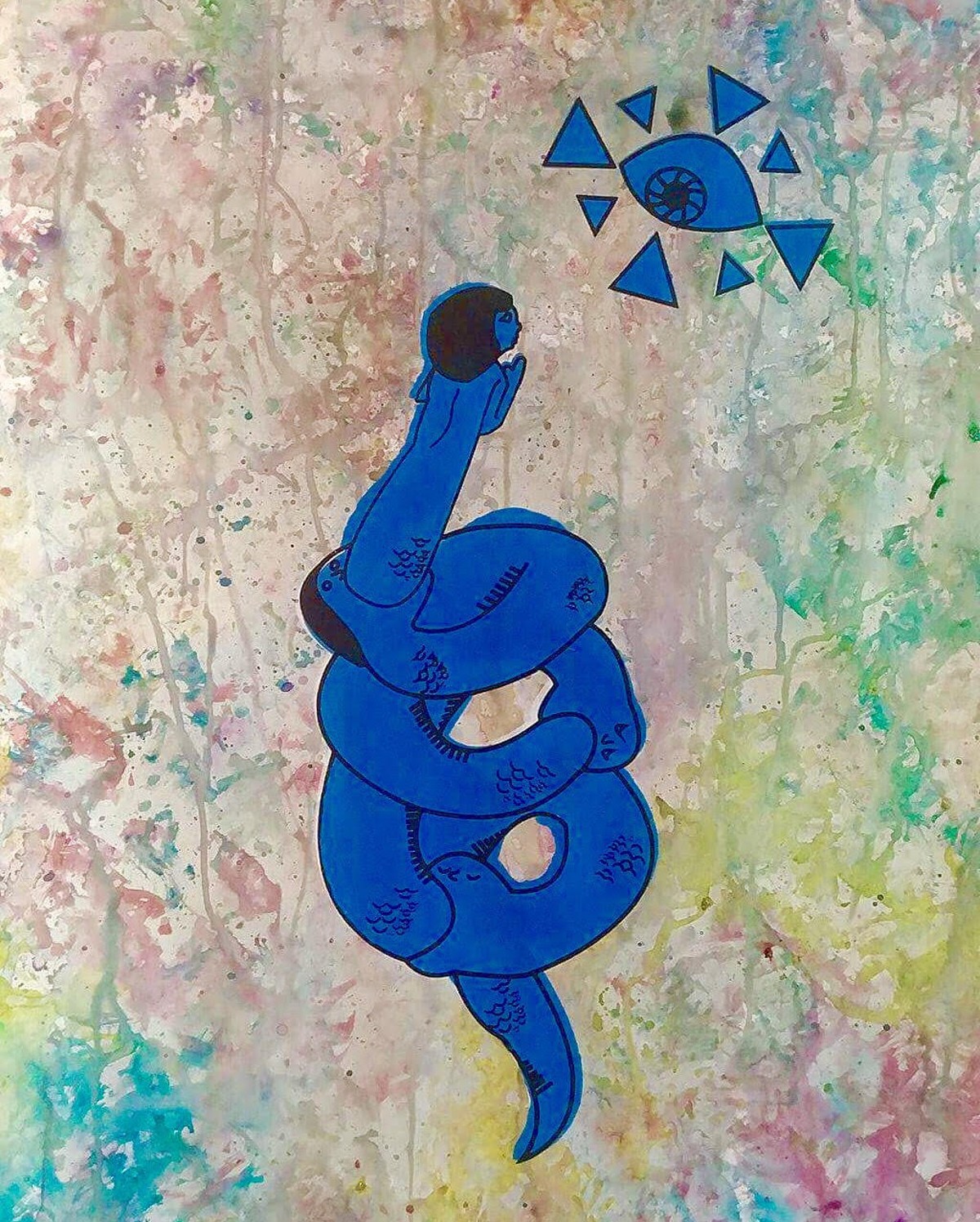Even kids know that snakes shed their skin. This process not only facilitates snakes' growth and development, it also removes parasites and other funk that may have attached to the old skin. As humans, the psychic shedding of one's "skin" can come about through provocations of many forms including, but not limited to, near-death experiences, aging, relocation, change, divorce, PTSD or sexual assault.
Amanda Bahia is a 2017 BFA graduate in illustration from the Cleveland Institute of Art. Her solo exhibition, Even Snakes Shed Their Skin, at Negative Space Gallery's Annex, came about through a conversation with her good friend, Amelia Zamir.
"We were having a conversation a couple of months ago," Bahia says. "I was going through a period in my life and we were discussing how I haven't changed and how I may never change. I was in sort of that mind space, and Amelia expressed, 'Oh, that's ridiculous, even snakes shed their skin.' And that hit me as so profound and true. Even I could shed some layers if I was so inclined."
The artist has chosen not to expound upon her own transformation, but to let the art open a dialogue with the viewer.
In this very symmetrical presentation of her work, Bahia develops egg imagery that she was working on over the summer, which coincided with the theme of transformation at this juncture in her life. "The Egg Cracked 1 & 2" are parenthetical beginnings both literally and figuratively in this work. The unmistakable line of cracked ova in black and gold with "Don't Forget" are screen printed on water-marbled paper posited as Yin and Yang not only on the pieces themselves, but in how Bahia has purposefully displayed the two prints. The artist marbles the paper herself using a Japanese water coloring technique called Suminagashi, translated as "floating ink," a process she learned while interning at the Morgan Conservatory.
As we move inward, the story line continues in "Old Dreams 1." The golden cracked egg is now contemplating the next stage of its transformation. A cloud encases the beginning of the age-old statement, "When I Grow Up ...," above what appears to be a Victorian cameo. We see that in "Old Dreams 2" the cameo has broken through the cloud and now wears a crown, the same phrase underneath, lifting the imagery up and out of confinement.
The next two prints, "Snakes in the Sky 1 & 2," bear striking symbolism whether or not the artist is aware of it. These two pieces are probably the most profound and thought-provoking personal images in the exhibition. The color scheme strongly resembles the left and right ventricles of the heart. In both prints, we see a female form shedding or being birthed from the trio of snake-like entities, confronting an all-seeing eye. The image floats clear against a splattered chaotic background.
Finally we get to the heart of the matter with "Snakes in the Sky (Doppelganger)." In this last piece, the gold and black cracked eggs have gone through their metamorphosis and Yin and Yang meet again. The print is pure line with no color.
Bahia also delivers an installation titled "Pretty/Dirty (Cycle)." Layers of fragile, handmade paper are strung up inside an airy iron gazebo. Each page has two to three images of corporeal cavities.
"This one is a little more political, I feel," the artist confesses. "I was making books with this same imagery that I was selling at [small press and underground comic convention] Genghis Con. It was basically these little books with images of orifices. There's a mouth, a vagina, an anus. These depictions are supposed to be related to political conversations of sexual assault (invasion of the body) and the phrase, 'These aren't yours,' came up a lot."
This quiet artwork speaks poignantly of the many layers of assault. The gazebo, which was in situ, is a perfect choice for the installation. The gazebo itself resembles the skeletal framework of the Capitol building's dome, which may or may not expand the current political discussion on what belongs to whom.
CORRECTION: An earlier version of this review stated that half of the exhibition had been damaged by a water leak in the Annex Gallery. No such leak occurred, and the exhibition is intact.












